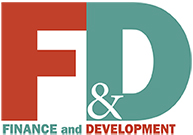Reducing Informality
Finance & Development, March 2015, Vol. 52, No. 1
It may be a great slogan, but it is of little value as a practical objective for tax reform

“Taxing the informal economy” leads the African Development Bank’s tax priorities (Mubiru, 2010). Auriol and Warlters (2005) cite “large informal sectors that are difficult to tax” as a major issue for these economies. The same theme replays when it comes to some advanced economies. The IMF (2013) said that “low revenue efficiency in Greece” is partly the result of the “large . . . informal economy.”
It is no surprise then that reducing informality is often seen as a central objective of tax reform. But precise definitions of informality, as set out for instance by the International Labour Organization (2013), are based on labor and enterprise regulation rather than on tax considerations. So thinking in terms of reducing informality may not be a useful guide to making tax policy.
Paying or not
What informality means is rarely spelled out in tax discussions, but when economists build models informality usually seems to mean nonremittance of the full amount of tax due—that is, failure to pay. Yet there are many reasons why a firm or individual might pay no tax. They could simply be below the threshold (of size or income) at which they are legally obligated to pay taxes—in some cases because they reduced their activity to get under that limit. Or they could be evading—dishonestly failing to pay. For policymaking, why a firm or individual pays no taxes can matter as much as or more than the fact that they pay nothing. The question is how tax systems should be structured when their design may affect not only how much tax is paid, but the different ways in which it is not paid.
It is important, moreover, to recognize that individuals and firms commonly have several different obligations with which they may or may not comply—not only to different taxes (for example, value-added tax, VAT, and personal income tax), but also across different aspects of their activity. They are likely to face various labor laws, for instance, as well as tax rules. This raises a set of policy challenges that have been almost entirely ignored. How do measures that affect compliance with one obligation affect compliance with others? Does it make sense to harmonize the criteria defining these various obligations, so that either all apply or none do?
To see why all this matters, and illustrate how different types of agents might respond in very different ways to changes in tax design, take one key element of any tax system: the threshold above which tax is legally due. Most taxes—and indeed regulations in general—include such a cutoff because it is too costly, for both government and taxpayer, to apply them to the very smallest.
Imagine, for instance, a simple setting in which the only tax or regulation is the VAT (which is levied on the value added at each stage of the production process and from the perspective of the final purchaser is a sales tax). In almost all countries, there is some threshold level of sales above which a firm pays a fixed rate of tax on all its sales. In addition, it faces some compliance costs in paying taxes that are unrelated to the level of sales. (An important implication follows: no firm will declare an amount just above the threshold, because cutting output to just below the threshold would save it more in fixed costs than it loses in sales. There is evidence that such effects are important in practice—Onji, 2009). Suppose too that firms differ in the maximum amount they can sell, though they can choose to sell less than that. They can also choose to pay less than the amount due on their true sales, but there is some cost to them in lying—such as penalties if they get caught. Within this setting, firms will plausibly fall into five categories, ranging from the smallest to the largest in pretax sales (Kanbur and Keen, 2014):
● The smallest firms, such as microenterprises, whose maximum sales are below the tax threshold: they declare truthfully and pay no tax;
● Adjusters, which are a bit larger and whose maximum sales would be above the threshold but choose, legally, to operate just below the tax threshold to avoid tax andcompliance costs;
● Ghosts, or firms whose true sales are above the tax threshold but choose to either falsely declare below the tax threshold or not declare at all;
● Cheats, which produce above the threshold and declare some, but not all, of their sales; and
● Large firms that declare truthfully and pay the full amount of tax.
This categorization is, of course, an oversimplification—but not without echoes of reality. It closely mirrors the segmentation of taxpayers by size and compliance risk that is increasingly common in tax administrations. What is important to recognize is that this segmentation is shaped by, and will respond to, the design of the tax system.
Tax policy and informality
If informality means nonremittance of taxes (or of some portion of the tax due), all but the large truthful firms are informal. But these informal firms are of very different types, and lumping them into a single category can lead to very misleading policy conclusions.
To see this, think about the effects of slightly increasing the VAT threshold. This would have no effect on the decisions of the large firms because the threshold is so far below their sales that it would certainly not be worth their while to reduce their sales to below the threshold. So the number of large firms would not change. And therefore neither would the total number of firms in the other categories. In other words, the number of informal firms would not change.
What increasing the threshold does change, however, is the composition of informality. It makes it more attractive to reduce output honestly by just enough to escape the tax, because there is less output loss incurred by doing so. As a result, some ghosts will become adjusters. And output will increase because the firms that had been hovering just below the threshold can now produce a little more. But the VAT threshold increase has no effect on the cheats because adjusting is not the relevant alternative for them. And because only cheats and large firms are paying any tax, there will be no effect on tax revenue.
Raising the VAT threshold, then, is a tax reform that has no effect on the number of informal firms or on tax revenue, but is still desirable because it results in an increase in output from firms that are fully tax compliant. That is a far richer conclusion than a simple “reduce informality” mantra would suggest.
This then suggests that it would be good policy to increase the threshold until there are no more ghosts (Kanbur and Keen, 2014). Pursuing this approach further leads to the conclusion that the possibilities of avoidance and evasion mean that the optimal tax threshold is higher than it would otherwise be. The implication again largely runs against the conventional mantra that tax rates should be set as low as possible to broaden the tax base. Setting a lower threshold in an attempt to somehow include more informal firms in the tax system can be exactly the wrong policy.
Almost no attention has been given to the important reality that firms nearly always face several different explicit or implicit tax regimes. For example, in India, registration and worker benefit requirements for the Factories Act kick in for manufacturing firms at specified thresholds of employment, while the central excise tax is payable above specified levels of sales. In these more complicated situations, the simple framework used to analyze the VAT threshold increase must be expanded.
Consider a situation in which a firm has two separate obligations that may have different thresholds—say VAT and income tax. There are then two possibilities. If the thresholds are very close, we would expect any firm that adjusts out of one to adjust out of the other too (because it never makes sense, given the fixed costs involved, to be only slightly above a threshold). If, on the other hand, the thresholds are far apart, there may well be some that adjust only out of the tax with the higher threshold.
No uniform notion
The conventional definition of informality as nonremittance of tax applies easily in the first case, because firms will either comply with both obligations or with neither. But when the thresholds are widely separated, the possibilities are complex: some firms may pay both taxes, some may pay one but adjust out of the other, and some may adjust out of one but be below the threshold for the other. It is virtually impossible to say what would constitute informality under these diverse circumstances. Assessments are even more complicated when there are more than just two tax or other obligations. In other words, there can be no uniform notion of informality. That means informality cannot form the basis of tax policy, which instead must be thought of directly in relation to social objectives and firms’ responses to tax instruments.
There is a related policy question that has received almost no attention: whether in designing systems with several obligations, policymakers should aim for a common threshold or sharply different ones. Many would answer, we suspect, that a common threshold for multiple obligations would make life easier for a firm. Perhaps it would, but that is only part of the story. Other considerations nudge policymakers in exactly the opposite direction.
Suppose for example that something akin to the registration requirements of the Factories Act in India were calibrated to start at the same level of sales as the VAT. Then some firms would adjust out of both. If the Factories Act threshold were raised, firms hovering below it could now hire more workers, and make more sales. And there eventually would come a point at which they would choose to increase sales by enough to bring them above the VAT threshold, while remaining below that for the Factories Act. Raising the threshold for one obligation thus induces firms to put themselves into the other obligation. As long as the revenue raised from this second obligation is positive, it can be shown that there is an overall welfare gain from differentiating thresholds in this way.
Use of the term informality in relation to tax matters is not going to go away anytime soon. What is important, however, is to recognize the danger of its imprecision when invoked in the context of tax policy. The aim of tax policy (aside from equity issues) should be to increase social welfare, taking into account standard concerns of efficiency and equity. Slogans about reducing informality are of little help, even as some kind of intermediate objective—indeed they have proved less of an aid to clear thinking than a distraction from it. ■
Ravi Kanbur is T.H. Lee Professor of World Affairs at Cornell University and Michael Keen is Deputy Director of the IMF’s Fiscal Affairs Department.
References
Auriol, Emmanuelle, and Michael Warlters, 2005, “Taxation Base in Developing Countries,” Journal of Public Economics, Vol. 89, No. 4, pp. 625–46.
International Labour Organization (ILO), 2013, Measuring Informality: A Statistical Manual on the Informal Sector and Informal Employment (Geneva).
International Monetary Fund (IMF), 2013, “Greece: Ex Post Evaluation of Exceptional Access under the 2010 Stand-By Arrangement,” IMF Country Report 13/156 (Washington).
Kanbur, Ravi, and Michael Keen, 2014, “Thresholds, Informality and Partitions of Compliance,” International Tax and Public Finance, Vol. 21, No. 4, pp. 536–59.
Mubiru, Alex, 2010, “Committee of Ten Policy Brief—Domestic Resource Mobilization across Africa: Trends, Challenges and Policy Options” (Tunis: African Development Bank).
Onji, Kazuki, 2009, “The Response of Firms to Eligibility Thresholds: Evidence from the Japanese Value-Added Tax,” Journal of Public Economics, Vol. 93, Nos. 5–6, pp. 766–75.


